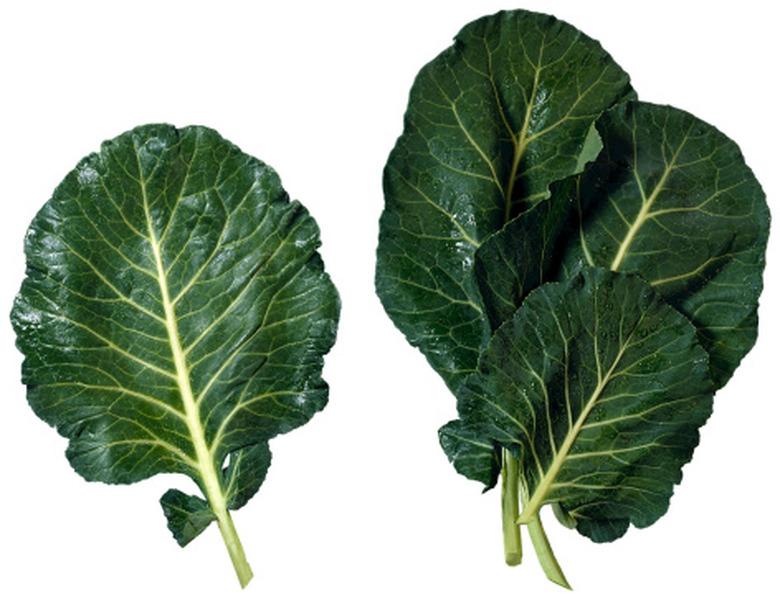Common Pests For Collard Greens
Step 1
Cabbage loopers and cabbage whiteflies and diamond-back moths are pests that affect collard greens. Flea beetles and harlequin bugs are two more. Several kinds of aphids, the cabbage aphid, turnip aphid, and the green peach aphid can be found in collard patches. Gardeners often look for ways to kill a pest population in one swoop, but don't overlook the efficacy of picking them off when you see them and getting them out of the garden.
Appearance
Step 1
Pale aphids, sometimes translucent, cluster on the undersides of leaves. You can easily see flea beetles moving over the leaves and stems of collards. Some are black and some black with a yellow stripe. The harlequin bug bright like its namesake with yellow, orange and red markings. Cabbage loopers are gray and moth-like and cabbage whiteflies tiny and powdery white. Diamondback moths are small and grayish-brown. When they close the wings a diamond pattern can be discerned.
Step 2
- Cabbage loopers and cabbage whiteflies and diamond-back moths are pests that affect collard greens.
- Cabbage loopers are gray and moth-like and cabbage whiteflies tiny and powdery white.
Damage
Step 1
Cabbage loopers, diamondback moths, and cabbage whiteflies chew on the leaves during the larval or worm stage. The adults lay their eggs on the leaves. The leaf might look ragged with small holes riddling the leaf. The pupae attach themselves to the leaves and feed. Beetles feed not only on the leaves and other foliage but will eat the roots as well. Aphids love the tender new growth. They suck the underside of leaves, extracting the sap until the leaves appear distorted. Harlequin bugs chew the leaves until they wither.
Step 2
- Cabbage loopers, diamondback moths, and cabbage whiteflies chew on the leaves during the larval or worm stage.
- They suck the underside of leaves, extracting the sap until the leaves appear distorted.
Cultural Practices
Step 1
Prevention of bug damage on collards starts with good cultural habits. Weed collard beds well and remove vegetation. Don't let water stand in puddles near the plants. Make sure air can circulate around the plants. Keep the plants healthy, well nourished and watered so they are not stressed. Unhealthy plants are prey to insect pests. Try interplanting other vegetables with the greens. In this way the insects that attack one kind of crop will find less to eat in that bed. If you mix in non-brassicas, such as potatoes, beets or celery, marigolds or mint, it may discourage collards pests.
Step 2
- Prevention of bug damage on collards starts with good cultural habits.
- Keep the plants healthy, well nourished and watered so they are not stressed.
Eviction
Step 1
Spray aphids off the collards with the hose. Spray horticultural oil on them that you make at home with soybean oil and liquid dish-washing soap. Aphids also respond to a dusting with diatomaceous earth. Synthetic pesticides include spinosad, and pymetrozine. Introduce beneficial insects such as green lacewings and lady bugs into the collard bed to eat the pest.
